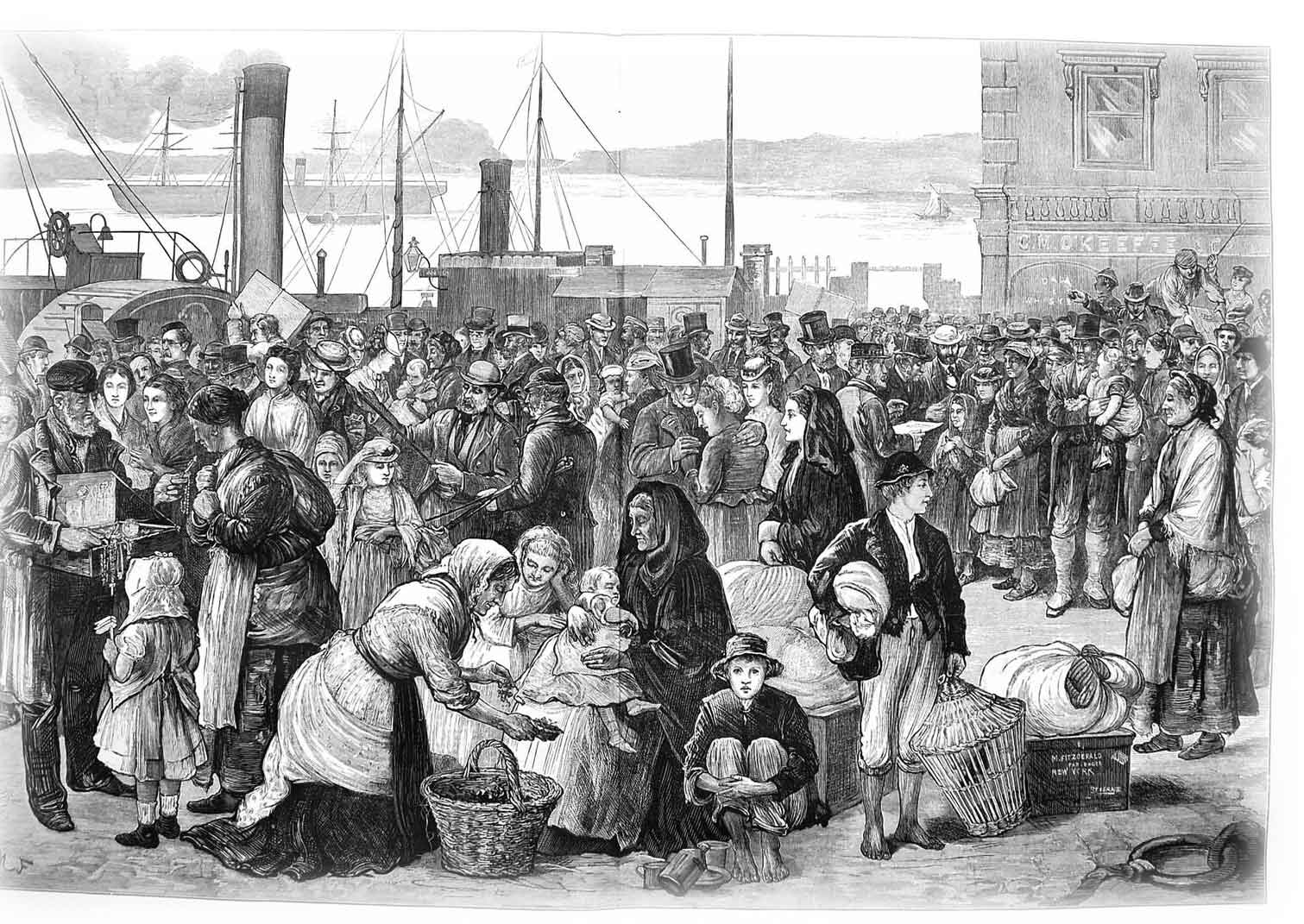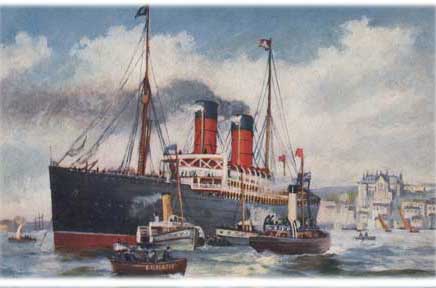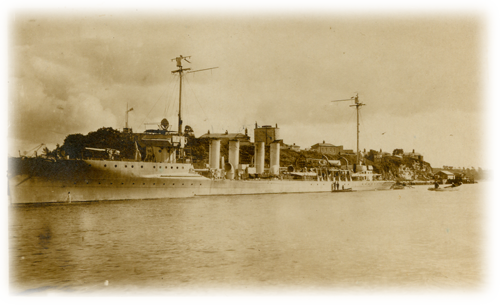

Bartlett engraving of Cove of Cork looking towards Rostellan (circa 1830)
Cork Harbour, is a large natural basin at the mouth of the river Lee, on the south coast of Ireland. It has had a long maritime tradition, with evidence of prehistoric Mesolithic coastal communities, and with records of trade between Ireland, Britain and the Continent dating back to earliest historic times

Emigrants in Queenstown (1874)
Britain's colonies provided a strategic importance to Cork, not only as an assembly point for convoys, but as a major victualling port for the Royal Navy. This resulted in the extensive series of fortifications, still standing on the shores of the harbour, as well as the former Royal dockyard at Haulbowline. The booming emigrant trade to America and Australia from the mid- eighteen hundreds increased the importance of the harbour both as a point of departure and as the first landfall for cross-Atlantic traffic.

Engraving of Cork harbour (circa 1840)
In an ironic twist, the Irish Famine provided a boon for the port, both as an emigration port as well as a distribution point for the ineffective Government provisioning squadron.
The name of Cork Harbour, and the town of Queenstown, is probably best known as being the final port of call of the Titanic in 1912. This infamous ship however never actually entered the harbour, but stood offshore while the passengers and mails were ferried out by tender.

A Cunard Liner in Queenstown Harbour
Queenstown again became well known to the public during World War One, again for tragic reasons. Many of the victims of the Cunarder Lusitania , sunk nearby off the Old Head of Kinsale, were brought ashore in May 1915. With the advent of the Convoy System in 1917, Cork Harbour became an important assembly point for large groups of ships destined throughout the world, and received the survivors of torpedoed and mined ships. It also became an important port of refuge for disabled ships.

USS Sampson opposite haulbowline Island (1918)
Cork was also the base for the first United States Naval Force under Admiral Sims, with a fleet of destroyers and subchasers based in Cork Harbour, and battleships and submarines iin Berehaven. The Atlantic passenger trade continued up to the advent of air travel, and the offices of various shipping companies can still be seen in Cobh town, formerly known as Queenstown.
The port probably assumed it's greatest importance during the Napoleonic Wars, when Cork was the main provisioning port of the Royal Navy, It was also a major trooping port during conflicts such as the Boer War. In 1918 the first US Naval Airbase in Ireland was located in Aghada, in the eastern part of the harbour.
In the first half of the 20th Century, Cork Harbour suffered from loss of traffic due to economic recessions, the decline of passenger emigrant trade, the decline in ship repairs and political problems. The passenger trade never recovered after World war Two, and continued to decline with the advent of large-scale commercial air travel.
The fortunes of the harbour have improved vastly in recent years, encompassing new large-scale port facilities capable of supporting diverse commercial container and bulk cargo traffic, as well as cruise ships and leisure craft. The harbour area itself has become an important manufactureing hub for the paharmaceutical industry.
With such large amounts of shipping traffic calling to, and passing the harbour, it was inevitable that there would be strandings and wreckings. The causes of these varied from mechanical failure, human error and weather, to wartime actions. Wrecks include sailing ships, steamships, submarines, and fishing trawlers.
Home